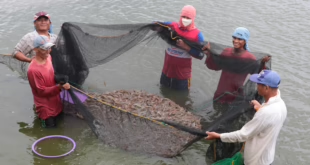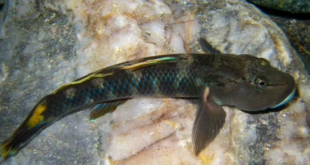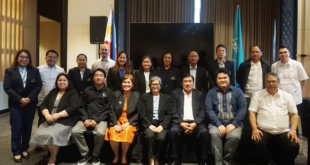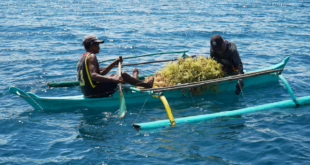By Development Communication Section

“Enduring forty-five years means that SEAFDEC/AQD is relevant and I am sure it still is and will be in the next 50 years”, said Chief Dan D. Baliao in his message during SEAFDEC/AQD’s 45th Anniversary Program on 13 July 2018.
“Shrimp culture was the priority program during its incipient years and still is,” he stressed. Chief Baliao believes that improved shrimp culture, aided by the ongoing “Oplan Balik Sugpo” program, will bring the Philippines back on the map as a major shrimp producer.
“Oplan Balik Sugpo” has been keeping the Fish Health Section on their toes. They are now fast-tracking the improvement of protocols to immediately detect diseases in shrimp.
Chief Baliao also reported that the Dumangas Brackishwater Station has been rehabilitated and reconfigured incorporating biosecurity features. The shrimp broodstock development team is also now into the production of good quality fry and broodstock selection using refined biosecurity protocols.
“The Nutrition and Feed Development team, on the other hand, is developing low-cost diets to reduce production cost and lower the cost by at least 30% compared to the commercial feeds,” he added even as he called on researchers to work together in reviving the shrimp industry in the Philippines and to make it globally competitive.

Over the last eight months, since Chief Baliao assumed office late last year, technology transfer activities have been intensified in partnership with other agencies and invitations for collaborations and requests for assistance have poured in.
“We cannot ignore these calls for they may come as great opportunities for us. We must grab the windows of opportunities that may only open once,” said Chief Baliao.
The establishment of legislated multi-species hatcheries at different sites in
the country is now being undertaken by DA-BFAR and SEAFDEC/AQD. Another project on mangrove crab seedbanks, nurseries, and grow-out farms in the Province of Catanduanes are also ongoing.
These collaborations will enable the two institutions to pool resources and technical expertise to revitalize the fishery and aquatic resources in the country. It will also be instrumental in achieving a common goal – increased fish production.
 SEAFDEC/AQD Southeast Asian Fisheries Development Center | Aquaculture Department
SEAFDEC/AQD Southeast Asian Fisheries Development Center | Aquaculture Department



